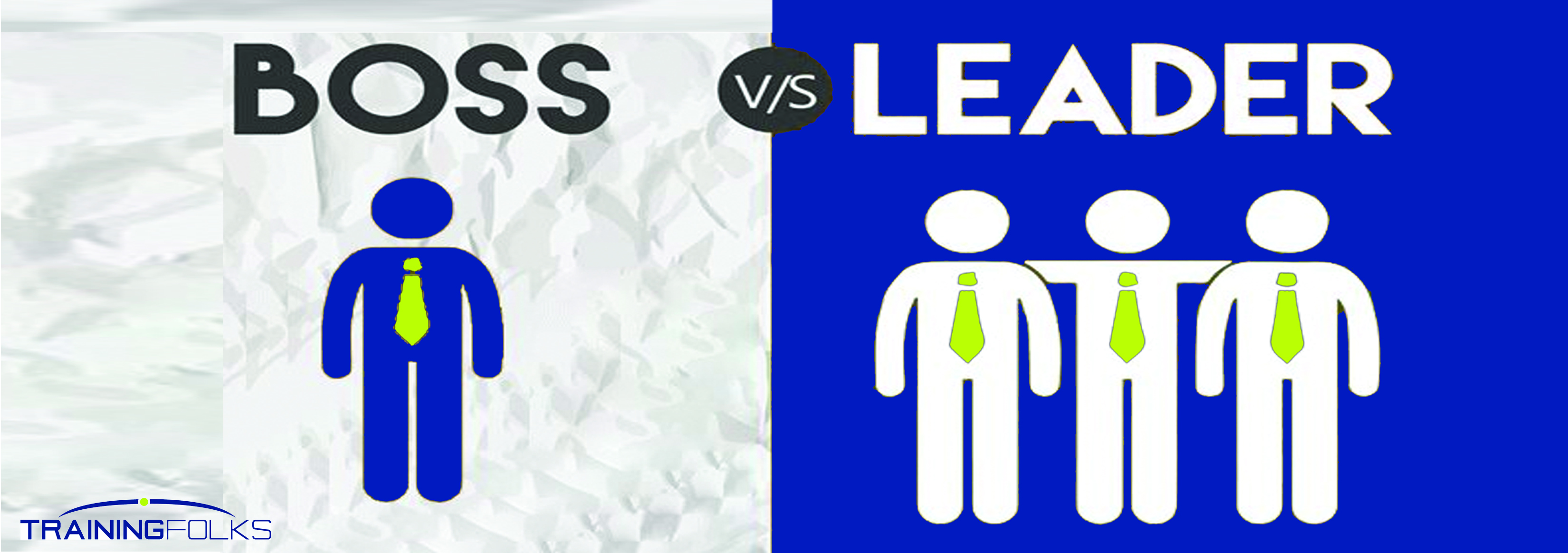TIPS FROM YOUR TRAINING COMPANY

The need for organizations to allocate corporate training and development dollars towards effective leadership development has grown substantially in the recent years.
While baby boomers or Generation X-ers may have been accustomed to the mentality of a boss versus a true leader, success or failure for organizations in today’s market place and going forward commands a very different approach to team management and leadership.The good news is that the top area of spending continues to be management and leadership according to a 2014 report from Forbes. Spending on leadership development has been trending as the top area of spending for years and is projected to remain on the up.
So what should organizations focus on when differentiating between the behaviors of a boss versus a leader?
Effective leaders lead not rule.
Hollywood characters like Braveheart, John Snow, or even Elle Woods exemplify the key traits of a good leader versus a ruler. Each is able to lead their without fear or an iron fist. Instead, they earn the respect of their followers through their actions, beliefs and inspiration, and are able to bring people together in order to fulfill a common goal.
Take a look at some strong leaders to follow here.
Good leaders listen.
While traditionally, bosses are known to give orders, an effective leader is one that takes the time to listen to the input provided by their teams. Two way discussions foster a positive experience for employees who feel like they are contributing and build their confidence as a valuable team member which increases overall engagement.
Don’t scare. Motivate.
Motivation is ten times more effective than scare tactics when trying to get your team to work towards an end goal. This is seen regularly when a deadline is missed or a mistake is made that comes back to the boss who in turn lectures or scolds the employee. A good leader takes the time to understand the problem and rectify it rather than the outcome of the problem itself. For example, was a deadline missed due to outside factors, miscommunication, or perhaps a lack of training in order to do the job in the first place?
Leaders develop teams
Instead of viewing team members simply as resources, effective leaders appreciate their teams for their talents, opinions and contribution. In order to nurture these traits, they are also instrumental in ensuring continuous employee training and development which works to make each team member more successful at their job while also showing them that their professional and personal growth is important to the leader and the organization as whole.
There’s no I in team.
Traditional bosses will be the ones to take credit for a job well done rather than acknowledging the team or team members that actually contributed to the success of a project. Sharing the limelight, building a rewards and recognition program and taking a minute to acknowledge a team member’s job well done creates team unity and is a trait of a good leader.
Key changes in the global workplace now demand effective leadership in order to ensure that organizations will succeed. These key factors include:
Remote work forces consisting of a growing number of employees working from home as part of the desire for more of a work-life balance.
Millennials, who want more of a collaborative approach in the workplace. They also want to achieve leadership roles but understand that they lack the skills required to lead a team and thus, are looking to the organization to help them achieve these.
Team dynamics are consistently changing with global offices working together and cultural, gender and generational differences playing a huge role in the way employees and teams interact and need to be led.
As the business landscape continues to change and leaders work to adapt, they will need the help of the organization with the right leadership development training.
According to a study published in the International Journal of Academic Research in Business and Social Sciences, organizations that train and develop their employees see improved profitability “while cultivating more positive attitudes toward profit orientation.”
A great place to start is with the Everything DiSC Work of Leaders® assessment, which takes DiSC as its foundation, but analyzes many other leadership attributes to develop a comprehensive leadership program. The DiSC profile is enhanced by compelling, highly personalized analysis and description, plus informative charts and 18 linear continua, all of which depict key ideas and enhance the narrative. The result is a highly personalized and highly effective leadership development program.
Learn more about this program today and look through a free sample profile.
You can also download and print a free comparison chart outlining the difference between a strong leader and being a boss to share with your team.
To get started with an effective leadership training program get in touch with the the leadership development consultants at TrainingFolks today.



